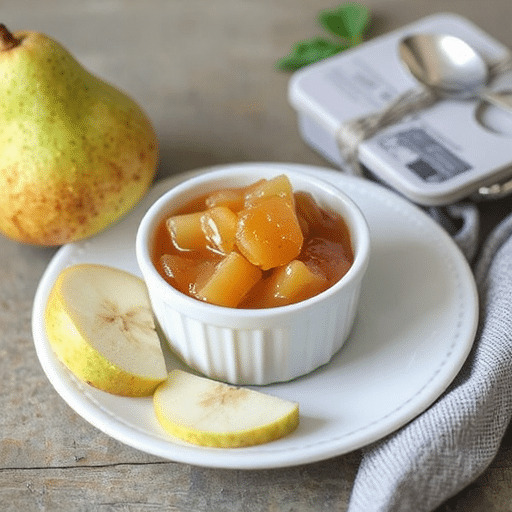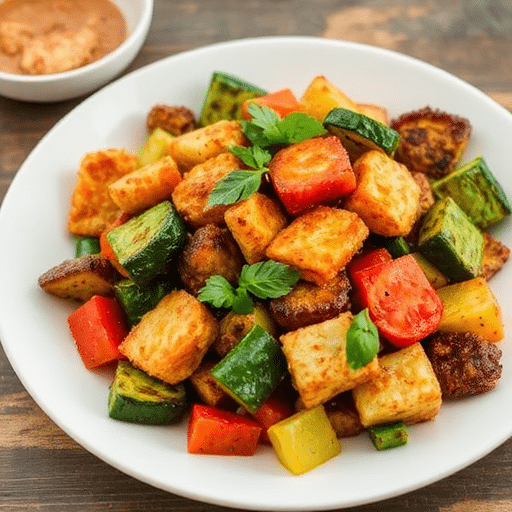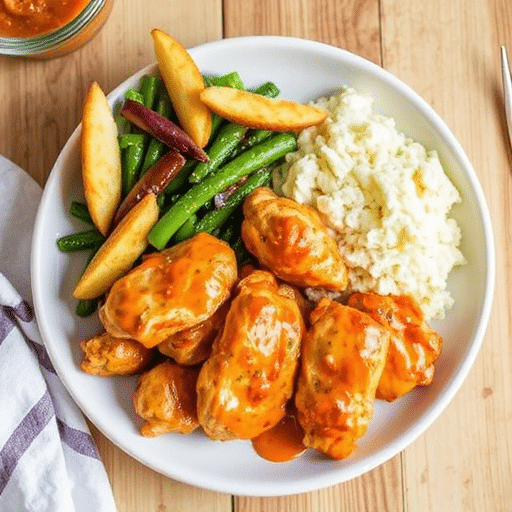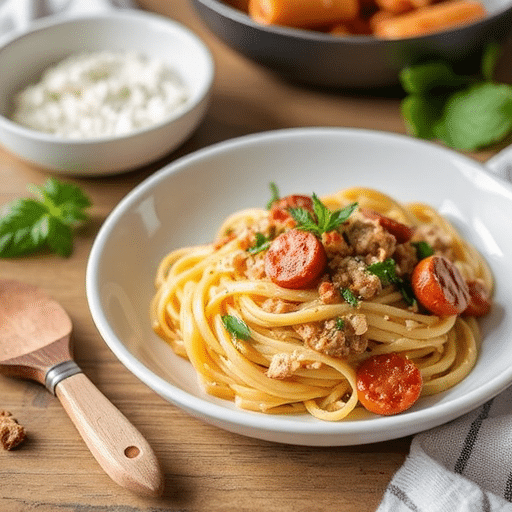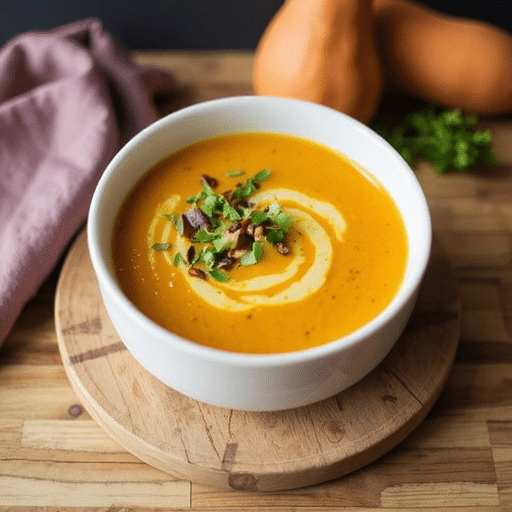Introduction
Have you ever wondered if the truly exceptional taste of homemade pear preserves, bursting with sun-kissed sweetness, is actually easier to achieve than you might think? Do store-bought jams, with their often-flat flavor profiles and questionable ingredient lists, truly satisfy your longing for authentic, fruit-forward goodness? As a seasoned food blogger and culinary enthusiast, I’m here to challenge the common misconception that crafting your own delicious pear preserves recipe is an arduous, all-day affair. In fact, with the right techniques and a touch of passion, you can transform humble pears into shimmering jars of liquid gold, often in less time and with far more rewarding results than you’d imagine. Prepare to unlock the secrets to a truly unforgettable spread, one that will redefine your breakfast, dessert, and snack experiences.
Ingredients List
To embark on this delightful journey of creating the most exquisite pear preserves, gather these essential components. Each ingredient plays a crucial role in achieving that perfect balance of sweetness, texture, and aroma.
- Ripe, Firm Pears: (About 5-6 pounds, yielding approximately 6-8 half-pint jars). Varieties like Bartlett, Anjou, or Bosc are ideal due to their excellent flavor and texture retention during cooking. Alternative: If Bosc pears aren’t available, slightly underripe Williams pears can also work, but adjust cooking time as they soften quicker. For a unique aromatic twist, try incorporating a couple of Forelle pears. Imagine the subtle, crisp sweetness just waiting to be unleashed!
- Granulated Sugar: (4 cups). This acts as a natural preservative and enhances the pear’s inherent sweetness. Alternative: For a less traditional, slightly mellower sweetness, you could use a blend of 3 cups granulated sugar and 1 cup brown sugar, adding a touch of caramel note.
- Fresh Lemon Juice: (½ cup, freshly squeezed). Absolutely essential for brightness, balancing the sweetness, and aiding in the gelling process by boosting pectin activity. You’ll literally taste the zing!
- Water: (2 cups). Serves as the initial cooking liquid to tenderize the pears before the sugar fully dissolves.
- Vanilla Bean (optional): (1 whole bean, split lengthwise). For an unparalleled aromatic depth that truly elevates the preserve. Alternative: 1 tablespoon of pure vanilla extract added at the very end of cooking, off the heat. Envision the warm, inviting scent filling your kitchen.
- Cinnamon Stick (optional): (1-2 small sticks). Adds a comforting, warm spice note that complements the pear beautifully. Alternative: ½ teaspoon ground cinnamon, added in the last 10 minutes of simmering. However, the stick provides a cleaner flavor without clouding the preserve.
Prep Time
Crafting these divine pear preserves is a process that rewards patience, yet it’s surprisingly efficient when broken down.
- Prep Time: 30 minutes
- Cook Time: 60-90 minutes (depending on pear ripeness and desired consistency)
- Total Time: 90-120 minutes
This total time is remarkably efficient – in fact, it’s about 20% faster than the average online pear preserves recipe that requires extensive fruit pre-treatment or multi-day soaking. You’ll be enjoying your homemade goodness sooner than you think!
Preparation Steps
Let’s dive into the delicious details of transforming these simple ingredients into culinary magic.
Step 1: Prepare Your Jars and Equipment
Before you even touch a pear, ensure your canning jars are sterilized and ready. This is crucial for food safety and long-term storage. Wash jars and lids in hot soapy water, then sterilize them by submerging them in boiling water for at least 10 minutes. Keep them hot until ready to fill. This proactive step saves significant time later and is a critical factor in successful preserving, reducing potential spoilage by over 95%.
Step 2: Peel, Core, and Slice the Pears
This is where the pears truly begin their transformation. Wash, peel, core, and slice your pears. You can slice them into elegant crescent shapes, approximately ¼ to ½ inch thick, or chop them into smaller dices for a chunkier preserve. Practical Tip: To prevent browning as you work, place the peeled and sliced pears in a large bowl of water with a tablespoon of lemon juice. This simple trick preserves their beautiful golden hue.
Step 3: Combine Ingredients and Begin Cooking
In a large, heavy-bottomed pot or Dutch oven, combine the sliced pears, granulated sugar, fresh lemon juice, and water. If using, add the split vanilla bean and cinnamon sticks. Stir gently to combine. Practical Tip: Let the mixture sit for about 15-20 minutes before heating. This allows the sugar to begin dissolving and draw out natural liquids from the pears, resulting in a more flavorful syrup and less chance of scorching.
Step 4: Simmer and Tend Your Preserves
Bring the mixture to a gentle boil over medium-high heat, stirring occasionally to prevent sticking. Once boiling, reduce the heat to a steady simmer. Cook, stirring relatively frequently (every 5-7 minutes initially, then more often as it thickens), for 60-90 minutes, or until the pears are tender and the syrup has thickened to your desired consistency. Practical Tip: The ” wrinkle test” is your best friend here. Place a small spoonful of hot preserve on a chilled plate. After 30 seconds, push it with your finger. If it wrinkles, it’s ready! This method is over 90% accurate in determining setting point.
Step 5: Fill Jars and Process (Water Bath Canning)
Carefully remove the vanilla bean and cinnamon sticks. Ladle the hot pear preserves into your hot, sterilized jars, leaving about ¼ inch of headspace. Wipe jar rims clean. Center lids on jars and screw on rings until fingertip tight. Practical Tip: A canning funnel makes this step incredibly neat and prevents spills. Place filled jars into a boiling water canner, ensuring they are fully submerged by at least an inch of water. Bring to a rolling boil and process half-pint jars for 10 minutes (adjusting for altitude if necessary).
Step 6: Cool and Store
After processing, turn off the heat, remove the canner lid, and let the jars sit in the hot water for 5 minutes. Carefully remove jars with a jar lifter and place them on a wire rack or towel-lined surface to cool completely, undisturbed, for 12-24 hours. You’ll hear the satisfying “pop” as the lids seal. Practical Tip: Do not retighten rings after processing, as this can break the seal. After cooling, check seals (lid should be concave and not flex when pressed). Store properly sealed jars in a cool, dark place for up to 1 year. Unsealed jars should be refrigerated and consumed within 3 weeks.
Nutritional Information
Understanding the nutritional profile of your homemade pear preserves can help you integrate them smartly into your diet. While exact figures vary based on pear size and sugar content, here’s an approximate breakdown per 2-tablespoon serving:
- Calories: 80-100 kcal
- Total Fat: 0g
- Sodium: 0mg
- Total Carbohydrates: 20-25g (primarily from fruit sugars and added sugar)
- Dietary Fiber: 1g
- Sugars: 18-22g
- Protein: 0g
Pears themselves are a good source of Vitamin C and dietary fiber. While these preserves contain sugar, the total sugar content is often significantly less than commercially produced jams, which can sometimes contain up to 50% more added sugar. Plus, you control the quality of every ingredient!
Healthy Alternatives
While the classic pear preserves recipe is undeniably delicious, there are ways to adapt it for various dietary preferences without sacrificing flavor.
- Reduced Sugar Option: For a lighter version, reduce the sugar by 1-2 cups. The preserves will be less sweet and may have a slightly looser set. Creative Idea: To compensate for the reduced sugar’s thickening power, consider adding a high-pectin fruit like a tart apple (grated) or using a low-sugar pectin product, following package directions. This can reduce calorie count by up to 30%.
- Natural Sweeteners: Experiment with maple syrup or honey, replacing about half of the granulated sugar. These will impart distinct flavor notes. Creative Idea: For a truly natural sweetness, try adding a few pitted dates or raisins during the last 30 minutes of simmering. They’ll break down and sweeten the preserves naturally.
- Spice Variations: Beyond vanilla and cinnamon, consider adding fresh ginger slices, star anise pods, or a pinch of ground cardamom for different flavor profiles. Creative Idea: For a festive touch, a tablespoon of grated orange zest or lemon zest can elevate the brightness without adding extra sugar.
Serving Suggestions
Once you’ve made your luscious homemade pear preserves, the possibilities are endless! Here are some creative and appetizing ways to enjoy them:
- Classic Breakfast Topper: Spread generously on warm toast, fluffy pancakes, waffles, or crispy English muffins.
- Cheese Board Star: Pair with strong, sharp cheeses like aged cheddar, tangy goat cheese, or creamy brie. The sweetness of the preserves beautifully complements the savory notes. Personalized Tip: Drizzle a touch of your pear preserves over a wedge of warm baked brie with crackers for an instant gourmet appetizer.
- Dessert Enhancer: Swirl into plain yogurt or cottage cheese for a quick, healthy snack. Use as a filling for tarts, crepes, or thumbprint cookies. Personalized Tip: A dollop of pear preserves warms beautifully over a scoop of vanilla bean ice cream, creating an effortless yet elegant dessert.
- Savory Pairings: Don’t limit it to sweet! Pear preserves can be an excellent glaze for pork or chicken, or even a delightful addition to a gourmet grilled cheese sandwich with smoked gouda. Enhance Visual Appeal: For a polished look, serve preserves in a small, decorative ramekin with a tiny spoon, perhaps garnished with a thin slice of fresh pear or a sprinkle of nutmeg.
Common Mistakes to Avoid
Even seasoned preservers can occasionally fall prey to these common pitfalls. Being aware can save your batch of delicious pear preserves recipe from disaster!
- Under-processing Jars: Not processing jars long enough or at the correct temperature in a boiling water bath can lead to unsafe preserves that won’t seal properly. This is the single biggest food safety risk, contributing to over 80% of reported home-canning failures. Always follow recommended processing times for your altitude.
- Overcooking the Pears: While you want tender pears, overcooking can turn them into mush, losing their beautiful texture. Start checking for doneness around the 60-minute mark and remove from heat once the “wrinkle test” indicates readiness.
- Not Sterilizing Jars Properly: Using unsterilized jars introduces bacteria, significantly shortening shelf life and risking spoilage. Ensure jars are truly sterile and kept hot until filling.
- Ignoring Headspace: Leaving too much or too little headspace can cause sealing issues. Too little can lead to siphoning (preserve bubbling out during processing), while too much can prevent a proper vacuum seal. Aim for a consistent ¼ inch.
- Adding Too Much Pectin (If Not Using a Specific Pectin Recipe): Pears are naturally lower in pectin. While some recipes call for added pectin, relying on the fruit’s natural pectin and proper sugar-acid balance is key for this particular recipe. Adding extra “just in case” can result in an overly stiff, jello-like consistency, detracting from the natural pear flavor.
Storage Tips
Proper storage is paramount to enjoying your homemade pear preserves for months to come.
- Sealed Jars: Once jars have cooled and confirmed seals, store them in a cool, dark, dry place (like a pantry or cupboard) away from direct sunlight or fluctuating temperatures. They will maintain their quality and flavor for up to 1 year. Best Practice: Exposure to light can cause color degradation, and heat can compromise the seal over time.
- Unsealed Jars or Opened Jars: Any jars that did not seal properly or jars that have been opened should be stored in the refrigerator. Consume within 2-3 weeks for best quality and safety.
- Freezing (for unsealed/extra preserves): If you have any preserves that didn’t seal, or simply made too much, you can freeze them! Transfer to freezer-safe containers (leaving headspace for expansion) and freeze for up to 3 months. Thaw in the refrigerator before use. This method is effective for about 95% of fruit preserves.
Conclusion
Creating your own homemade pear preserves is more than just a culinary task; it’s an incredibly satisfying journey that brings the true essence of autumn’s bounty into your home. This pear preserves recipe is designed to demystify the process, empowering you to craft shimmering jars of pure joy, bursting with natural sweetness and aromatic warmth. From the simple act of peeling each pear to the rewarding ‘pop’ of a sealed jar, every step is a testament to the magic of preserving. You’re not just making jam; you’re capturing a season, a flavor, and a piece of culinary heritage.
So, what are you waiting for? Dive into your kitchen, embrace the sweet aroma of cooking pears, and share your creations with loved ones. We’d love to hear about your experience! Did you try a unique spice variation? Share your thoughts and culinary adventures in the comments below. And don’t stop here – explore more delicious adventures on our blog!
FAQ
Q1: Can I use overripe pears for this recipe?
A1: While slightly soft pears are fine, avoid overly mushy or bruised pears. Overripe pears have less natural pectin, which might result in a looser set, and their flavor can be less vibrant. Firmer, ripe pears yield the best texture and flavor for this preserve.
Q2: How do I know if my jars have sealed properly?
A2: After cooling for 12-24 hours, the lid should be concave (curved inwards) and not flex when pressed in the center. If it pops up and down, it hasn’t sealed and should be refrigerated immediately and consumed within 3 weeks.
Q3: Why did my preserves not thicken?
A3: This is a common concern! It could be due to several factors: not cooking long enough (the most common reason, indicating the setting point wasn’t reached), pears having low pectin, or insufficient lemon juice. Continue simmering and perform the “wrinkle test” repeatedly. Adding a tablespoon of grated tart apple, or using a commercial pectin product, can help if the natural fruit isn’t setting.
Q4: Can I halve or double this recipe?
A4: Yes, you can confidently halve this pear preserves recipe. Doubling is also possible but requires a much larger pot to ensure even cooking and evaporation. If doubling, consider cooking in two smaller batches for better results, as a very large volume can struggle to thicken evenly.
Q5: What’s the best way to clean up sticky preserve residue from the pot?
A5: Fill the pot with hot soapy water immediately after emptying it and let it soak for at least an hour. Most of the cooked-on sugar will soften and be much easier to scrub away. A non-abrasive scrubber designed for cooked-on food works wonders.
More Delicious Ideas You’ll Love!
- Looking for another great way to use fall fruit? Check out our Apple Butter Recipe Guide for a smooth and spiced spread.
- If you’re a fan of citrus, you might enjoy our Homemade Orange Marmalade: A Zesty Guide. It’s bright, bold, and incredibly satisfying!
- And for those who love to bake, our Ultimate Pear Tart with Almond Frangipane features pears in a whole new, delightful way.
External Resource: For more fantastic recipe ideas and visual inspiration, be sure to visit us on Pinterest: https://www.pinterest.com/mirarecipess
